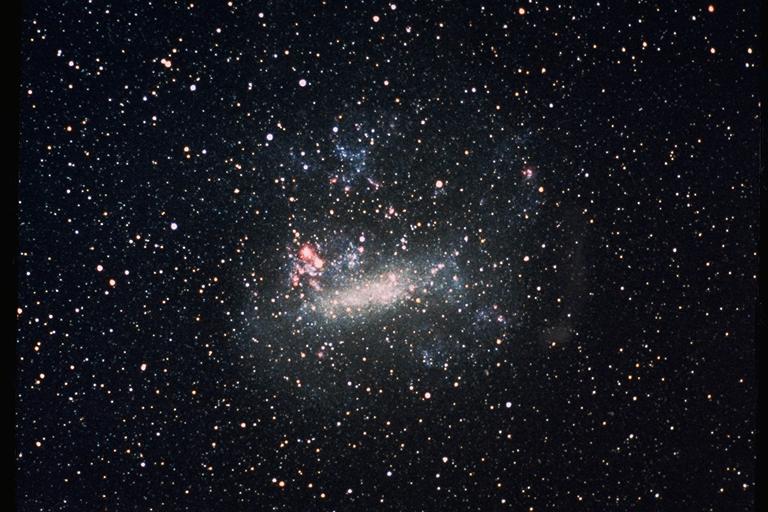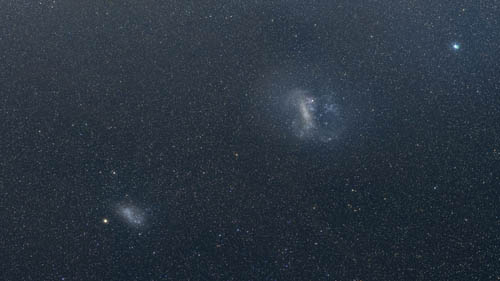The best way to describe an irregular galaxy is to compare them to open clusters. Open clusters are groups of stars that don't have an overall structure, but are gravitationally bound to each other. Irregular galaxies are large groups of stars that have no overall structure, but are also gravitationally bound to each other.
Obviously, an irregular galaxy is much larger than an open cluster, but are usually found orbiting a larger galaxy. These satellite galaxies were formed around the same time as their parent galaxy were formed, but since they don't have as much mass, they didn't grow into a spiral galaxy or elliptical galaxy. In irregular galaxies, we do find that they have a lot of gas and dust, which means they undergo active star formation. This also means that generally these are younger galaxies, with the stars forming after the galaxy formed.
The best examples of irregular galaxies (stylized as Irr) are the Large Magellanic Cloud (LMC) and the Small Magellanic Cloud (SMC), which can both be seen in the southern night sky.
- LMC is at -69° declination (seen only at latitudes south of 21°N)

- SMC is at -72° declination (seen only at latitudes south of 18°N)






